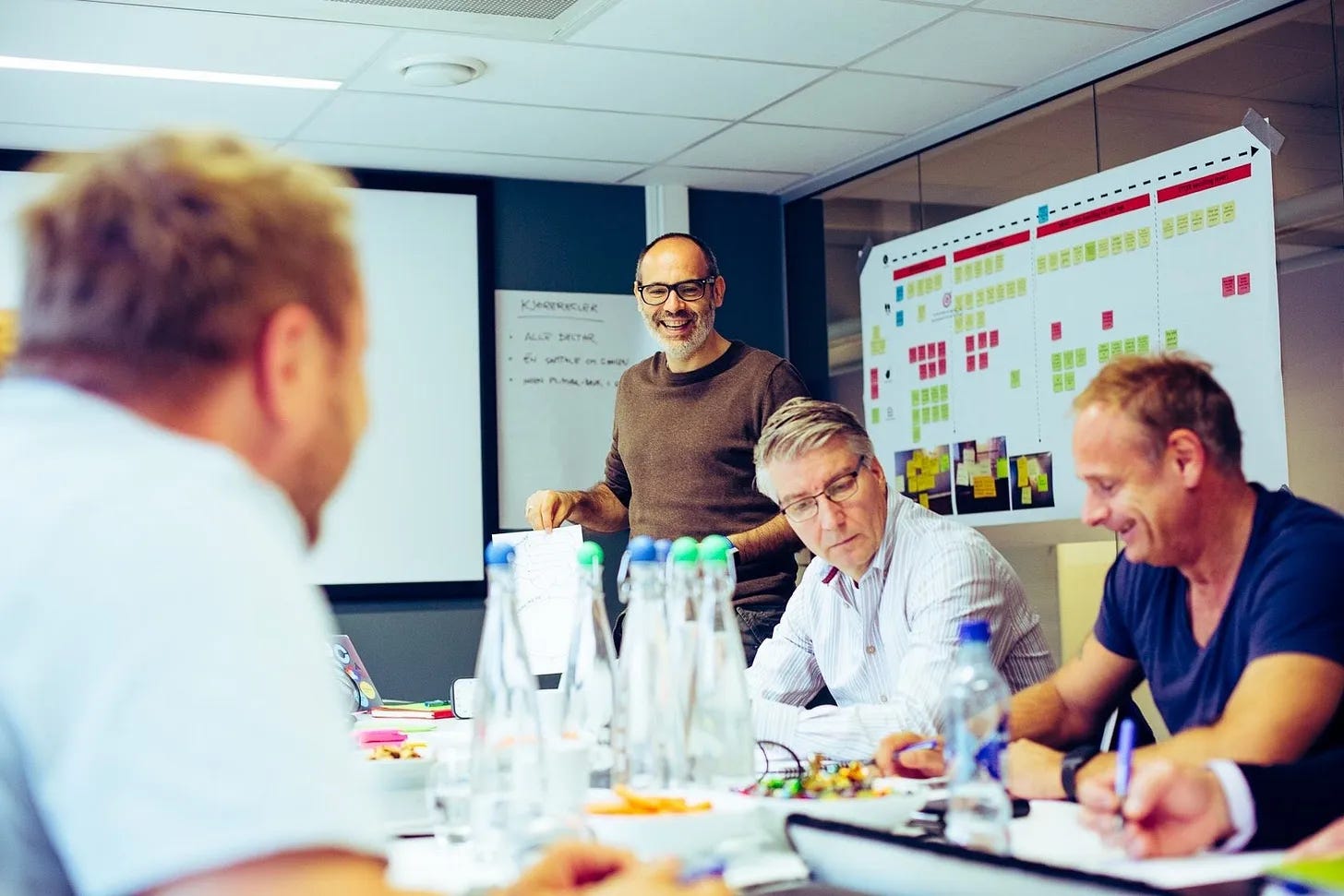The Leadership Balancing Act in Modern Product Development
How leaders can support both professional mastery and product impact.

Competence-based departments (resource pools) – where people with similar skills are grouped together, led by managers responsible for building competence, career development, and resource allocation.
Interdisciplinary product teams – where people from different competence areas come together to build, deliver, and improve products.
This dual structure is meant to combine the best of both worlds: strong professional development and customer-focused product delivery. But in practice, it creates unique leadership challenges.
The Tension Between Two Worlds
Leaders in such organizations face a built-in tension:
Competence leaders focus on skills, growth, and professional standards. They want their people to deepen expertise, share practices, and develop mastery.
Product leaders focus on outcomes, speed, and customer value. They want their teams to be empowered, autonomous, and delivery-driven.
Employees end up living in two worlds. They belong to a home (competence department) but spend most of their time with a family (product team). If these two worlds are not aligned, people feel stretched, confused, or even pulled in opposite directions.
Leadership Challenges
1. Who’s the Real Leader?
Employees often ask: “Who do I listen to?” The competence manager tells them to prioritize professional development, while the product manager pushes for product deadlines. Without clear communication and aligned priorities, employees can feel torn.
Leadership task: Establish clarity on who owns what — development vs. delivery — and make sure both leaders are in sync.
2. Competing Loyalties
A designer may feel loyalty to their craft and professional peers, but also to their product team. If recognition only comes from the competence pool, the product work can feel undervalued. If recognition only comes from product success, skills development may stagnate.
Leadership task: Celebrate contributions in both spaces — the craft and the product impact.
3. Resource Allocation Battles
The competence leader often controls who goes where. But product teams want stability and continuity. Constant re-allocation can break trust, slow down learning, and create frustration.
Leadership task: Minimize churn. Protect team integrity. Treat resource allocation as a strategic choice, not a quick fix.
4. Career Development vs. Product Delivery
Competence managers want employees to grow, rotate, and expand their skills. Product leaders want long-term stability to maximize team performance. The tension is real: moving people around helps careers, but hurts team cohesion.
Leadership task: Create a shared development plan where growth opportunities align with product needs.
5. Double Communication Lines
Feedback, priorities, and expectations often get lost between the two leadership structures. Employees can end up with double one-on-ones, conflicting feedback, and a diluted sense of direction.
Leadership task: Synchronize leadership conversations. Ensure competence and product leaders speak with one voice, not two competing ones.
How to Make It Work
The dual structure is not a flaw — it’s a strength, if led well. Here’s how:
Shared leadership model: Competence and product leaders should see themselves as co-leaders, not competitors.
Explicit agreements: Clarify “who decides what” and communicate it openly.
Stable teams, flexible growth: Keep product teams stable but create space for competence building inside the team (learning circles, mentoring, practice guilds).
Unified recognition: Reward both product impact and professional mastery.
Employee-centered perspective: Design the system from the employee’s point of view. If they feel supported, clear, and valued in both worlds, the organization thrives.
Final Thought
Leading in a product development organization that mixes competence pools and interdisciplinary teams is like walking a tightrope. Lean too far one way, and you risk weak professional growth. Lean the other way, and you risk fragmented, underperforming teams.
Great leaders know how to balance the two — creating an environment where people grow in their craft and deliver meaningful products together.
I hope this post, made sense and you found it useful.
If “HELL YEAH!”, please like it and share it in social media so more people can get can also benefit from it :-)
I would also appreciate if you subscribe, and give some comments here if you wonder something and want to give me some feedback. I would love to read your input here!
If you have a Substack yourself and like my content, I would love for you to recommend “Facili-station” to your subscribers.
Have a nice one!!
Looking for a coach?
In service of those who serve others.
Leadership is hard. Whether you're stepping into management or leading an entire organization, the challenges are real: confusing, overwhelming, and sometimes isolating.
I offer tailored 1:1 or team coaching to help you move forward with clarity and confidence. I’ve walked in your shoes, and I’ll work with you to build the resilience and relational skills needed to lead well, beyond just the work.
If this sounds like what you need, let’s talk. Email me at jose@facilistation.com to book a free discovery call. Because coaching isn’t expensive. Staying stuck is.
Looking for a facilitator and workshop designer?
If you need a workshop designer and facilitator to help you or your team to solve challenges, find solutions, make decisions, and to be more effective an perform better and faster, or a trainer to teach your team on how do this, please contact me at jose@facilistation.com
My workshops are designed to provide the structure required to quickly align and move forward with a plan or idea so you can reclaim time, energy and headspace.



